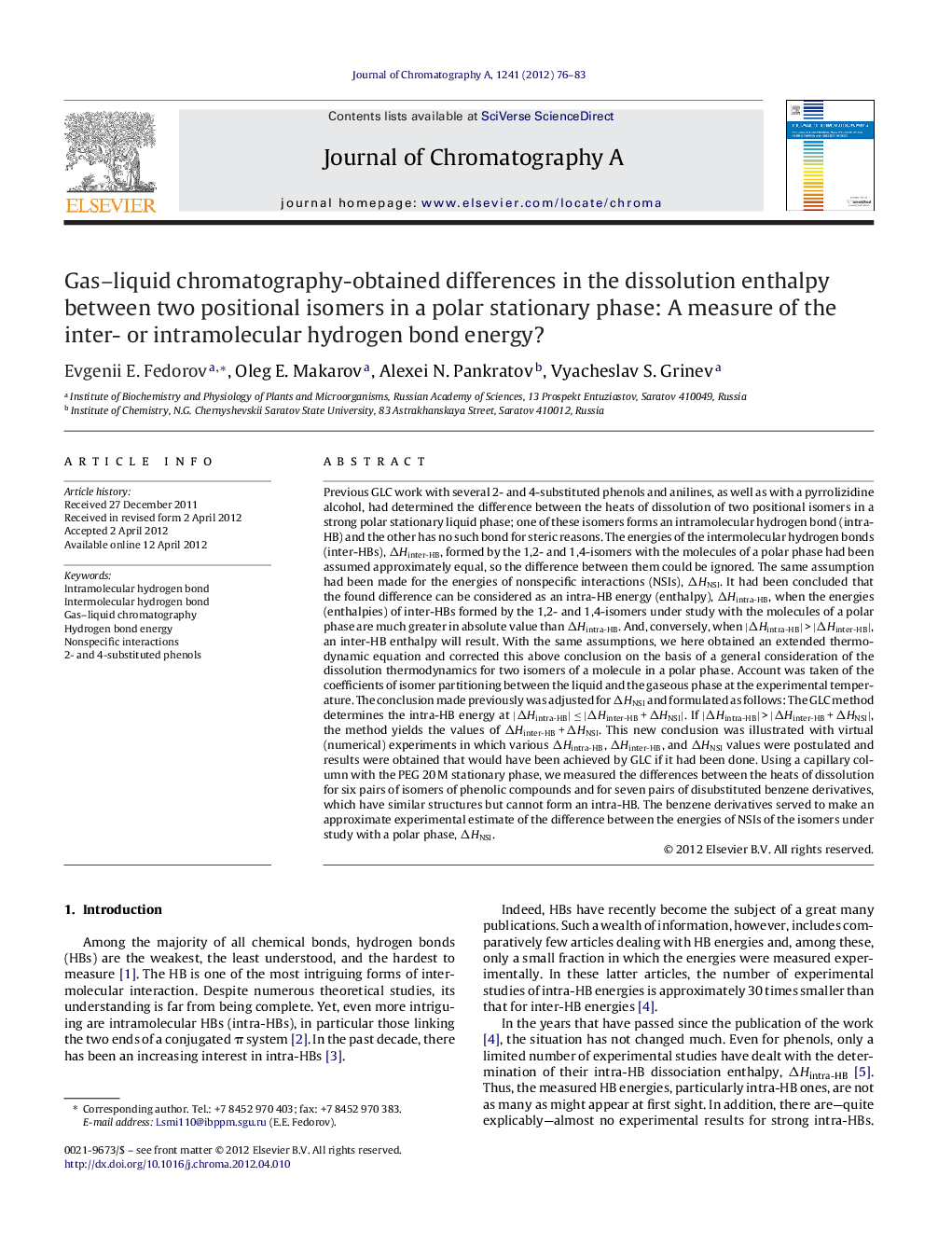| کد مقاله | کد نشریه | سال انتشار | مقاله انگلیسی | نسخه تمام متن |
|---|---|---|---|---|
| 1201837 | 1493684 | 2012 | 8 صفحه PDF | دانلود رایگان |

Previous GLC work with several 2- and 4-substituted phenols and anilines, as well as with a pyrrolizidine alcohol, had determined the difference between the heats of dissolution of two positional isomers in a strong polar stationary liquid phase; one of these isomers forms an intramolecular hydrogen bond (intra-HB) and the other has no such bond for steric reasons. The energies of the intermolecular hydrogen bonds (inter-HBs), ΔHinter-HB, formed by the 1,2- and 1,4-isomers with the molecules of a polar phase had been assumed approximately equal, so the difference between them could be ignored. The same assumption had been made for the energies of nonspecific interactions (NSIs), ΔHNSI. It had been concluded that the found difference can be considered as an intra-HB energy (enthalpy), ΔHintra-HB, when the energies (enthalpies) of inter-HBs formed by the 1,2- and 1,4-isomers under study with the molecules of a polar phase are much greater in absolute value than ΔHintra-HB. And, conversely, when |ΔHintra-HB| > |ΔHinter-HB|, an inter-HB enthalpy will result. With the same assumptions, we here obtained an extended thermodynamic equation and corrected this above conclusion on the basis of a general consideration of the dissolution thermodynamics for two isomers of a molecule in a polar phase. Account was taken of the coefficients of isomer partitioning between the liquid and the gaseous phase at the experimental temperature. The conclusion made previously was adjusted for ΔHNSI and formulated as follows: The GLC method determines the intra-HB energy at |ΔHintra-HB| ≤ |ΔHinter-HB + ΔHNSI|. If |ΔHintra-HB| > |ΔHinter-HB + ΔHNSI|, the method yields the values of ΔHinter-HB + ΔHNSI. This new conclusion was illustrated with virtual (numerical) experiments in which various ΔHintra-HB, ΔHinter-HB, and ΔHNSI values were postulated and results were obtained that would have been achieved by GLC if it had been done. Using a capillary column with the PEG 20 M stationary phase, we measured the differences between the heats of dissolution for six pairs of isomers of phenolic compounds and for seven pairs of disubstituted benzene derivatives, which have similar structures but cannot form an intra-HB. The benzene derivatives served to make an approximate experimental estimate of the difference between the energies of NSIs of the isomers under study with a polar phase, ΔHNSI.
► More exact interpretation of GLC measurements of the intra-HB energy is given.
► The intra-HB energies of six substituted phenols were measured by capillary GLC.
► The conclusions were confirmed by the results of numerical experiments.
Journal: Journal of Chromatography A - Volume 1241, 8 June 2012, Pages 76–83